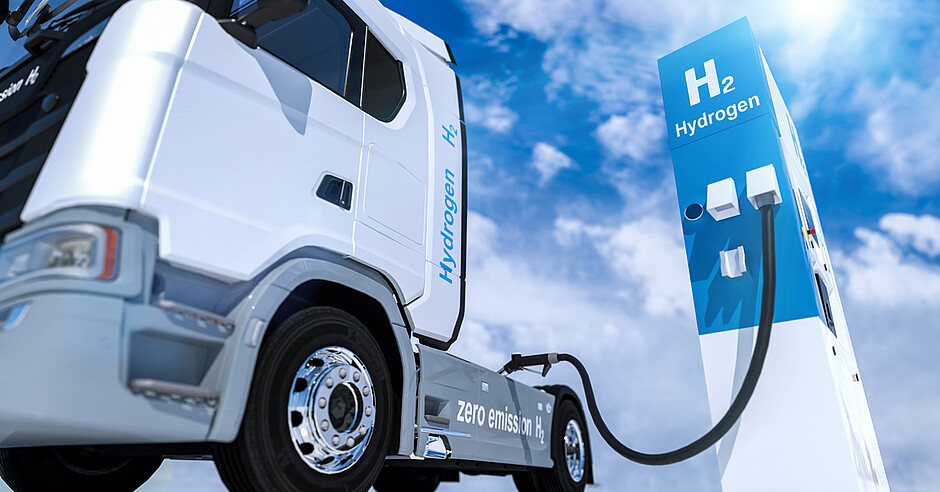Safe hydrogen tanks as an enabler for sustainable mobility
In order to achieve the climate targets, emissions must be significantly reduced - including in the transport sector. Around 90 percent of transport-related CO2 emissions come from road traffic, a third of which is caused by commercial vehicles. The development of alternative drive systems for commercial vehicles is therefore the focus of the CryoTRUCK1 project funded by the BMDV.
CryoTRUCK is concerned with the use of hydrogen as an alternative energy source in long-distance commercial vehicles. The three-and-a-half-year project focuses on the development and validation of a storage and refueling system for cryogenic hydrogen (CcH2 = cryogas).
Cryogas is an extremely cold pressurized gas that can be produced from liquid or gaseous hydrogen. Cryogas hydrogen has a higher storage density and corresponding range advantages.
In order to bring this H2 storage technology safely into use, it must be comprehensively tested and qualified. The focus here is on component and system testing with cryogenic compressed gas as well as qualification with hydraulic test procedures for the storage system.
Certification not without prior qualification
This task is tailor-made for IABG, which specializes in the development of test strategies and the implementation of sophisticated tests to qualify innovative high-tech systems and components and contributes its unique expertise in this area. IABG has already successfully carried out similar tests for smaller storage volumes.
In the CryoTRUCK project, IABG is responsible for the development of new test procedures to safeguard H2 storage systems in conjunction with the associated refueling technology. For this purpose, new test facilities for water-hydraulic tests as well as for tests with cryogenic hydrogen must be set up. IABG has ideal test sites at its locations in Lichtenau and Dresden.
Water-hydraulic tests at the Dresden site
In stage 1, water-hydraulic tests are carried out at the Dresden site. This means that the tanks are initially filled with water instead of H2. While we use pressure tests to verify the tightness of a container, the pressure is increased during burst tests until the container fails. The tests are supplemented by cycling tests. The H2 container is pressurized many times to prove that it can safely withstand the stress of filling and removal processes over its entire service life.
Tests with cryogenic hydrogen at the Lichtenau site
At the Lichtenau site, we carry out tests with cryogenic hydrogen, which naturally entail a higher risk potential. We ensure that neither people nor the test infrastructure are harmed even in the (unintended) event of a burst failure. Two test sites and a 5 t liquid hydrogen storage facility are to be set up on the test site. The possibility of expansion for tests with LH2, sLH2 and CGH2 is planned.
Outlook
Our flexible, multifunctional test environment allows us to test large H2 tanks as well as components such as electrolyzers, condensers, cryopumps, evaporators, fuel cell systems, etc. In addition to tests with cryogas hydrogen, we can also carry out tests with gaseous and liquid hydrogen. This enables us to create unique test options to accompany development, which are currently starting to be used in the commercial vehicle segment, but will also be important for sectors such as aviation, rail technology and shipping in the future.
Your contact person:
Mr. Torsten Semper
wasserstoff@iabg.de
You can find out more about our services in the field of H2 technologies here.
1 The CryoTRUCK project is funded by the Federal Ministry of Digital and Transport (BMDV) as part of the National Innovation Program for Hydrogen and Fuel Cell Technology. The funding guideline is coordinated by NOW GmbH and implemented by Project Management Jülich (PtJ).
Abbreviations:
LH2 = hydrogen in liquid form
sLH2 = supercooled hydrogen in liquid form
CcH2 = cryogenic hydrogen (gaseous)
